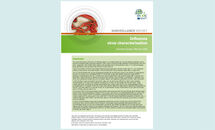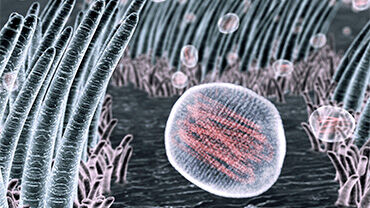Influenza virus characterisation, Summary Europe, February 2018
This is the third report of the 2017–18 influenza season. As of week 8/2018 over 151 000 influenza detections across the WHO European Region have been reported. Types A and B viruses have been detected in the proportions 40% and 60%, respectively, with A(H3N2) being slightly more prevalent than A(H1N1)pdm09 viruses (1.1:1) and B/Yamagata being significantly more prevalent than B/Victoria viruses (45.8:1).
Executive Summary
Twenty-nine EU/EEA countries have shared influenza-positive specimens with the London WHO CC, Crick Worldwide Influenza Centre (WIC), since week 40/2017, with 871 specimens having collection dates after 31 August 2017.
The 101 A(H1N1)pdm09 test viruses characterised antigenically showed good reactivity with antiserum raised against the 2017–18 vaccine virus, A/Michigan/45/2015. The 102 test viruses with collection dates from week 40/2017 genetically characterised at the WIC, as others from the European Region with collection dates after 31 August 2017 deposited in Global Initiative on Sharing All Influenza Data (GISAID), have all fallen in subclade 6B.1, defined by HA1 amino acid substitutions S162N and I216T, the great majority with additional substitutions of S74R, S164T and I295V.
Of 185 A(H3N2) viruses successfully recovered to date, only 30 (16%) had sufficient HA titre to allow antigenic characterisation by HI assay in the presence of oseltamivir, of which 25 were tested since the last report. These viruses were poorly recognised by antisera raised against the currently used vaccine virus, eggpropagated A/Hong Kong/4801/2014, in HI assays. Of the 176 viruses with collection dates from week 40/2017 genetically characterised at the WIC, 120 were clade 3C.2a (with 98 3C.2a2; 18, 3C2a3 and four 3C2a4), 54 fell within 3C.2a1 (with two 3C2a1a and 51 3C2a1b), and two were 3C.3a.
The minority (30%) of B/Victoria-lineage viruses tested, were recognised well with post-infection ferret antisera raised against tissue culture-propagated surrogates of the currently used vaccine virus B/Brisbane/60/2008; by contrast, the majority (70%) reacted well with an antiserum raised against tissue culture-propagated B/Norway/2409/2017 that carries a deletion of two amino acids in HA1 (Δ162-163). Of the 28 viruses characterised genetically at the WIC with a collection date after week 40/2017, ten fell within clade 1A, and 18 fell within the subgroup carrying the HA1 double amino acid deletion.
A total of 163 B/Yamagata viruses were characterised antigenically, and 83% reacted well (within fourfold of the homologous titre) with post-infection ferret antiserum raised against egg-propagated
Influenza
Download







